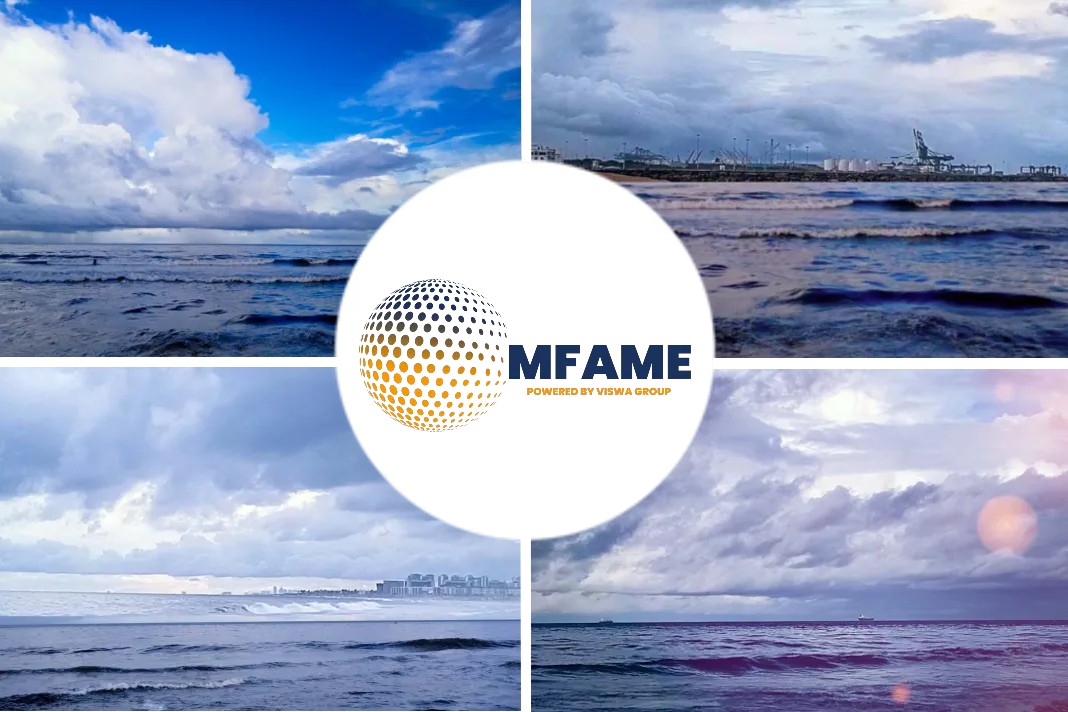- Over pressurization of vessel tanks when shore pipelines are cleared can cause physical distortion and even rupture of the tanks.
- Line blowing is clearing shore pipeline using compressed air or nitrogen.
- Pigging is a form of line clearing in which an object, most often in the form of a rubber sphere or cylinder known as a “pig”.
Over pressurization of vessel tanks when shore pipelines are cleared can cause physical distortion and even rupture of the tanks, says an article published on gard website.
Line blowing or Pigging
Over the years, Gard has seen some extensive structural damage resulting from over pressurization of liquid cargo tanks during shore pipeline clearing either by line blowing or pigging.
Line blowing is clearing shore pipeline using compressed air or nitrogen. Pigging is a form of line clearing in which an object, most often in the form of a rubber sphere or cylinder known as a “pig”, is pushed through the shore pipeline by a liquid or by compressed gas.
A pig may be used to clear the pipeline completely, in which case it will usually be propelled by compressed gas, or to follow a previous grade of cargo to ensure that the pipeline remains as free of product as possible, in which case it is likely to be propelled by the next grade.
Such operation is necessary to prevent mixing of grades or products in the shore pipeline to avoid cargo contamination and to ensure the line is ready for the next operation.
Causes of structural damage to the tanks
Pigging introduces product through the vessel cargo manifold and line blowing introduces both product and gas through the manifold. The immediate causes of structural damage to the tanks include:
- gas being supplied at a too high volume compared to the capacity of the ship’s tank vent system arrangement
- the amount of cargo being pushed into the ship’s cargo tank is too large compared to the tank ullage available
- the cargo coming at too fast a rate
Preventing accident
The procedure for clearing shore pipelines between the shore tank and the ship manifold will depend on the facilities available at each terminal and the type of cargo loaded.
Due to the volume being displaced into the cargo tank during pipeline clearing, it is extremely important that this flow is controlled at the manifold with the manifold valve.
Ship and terminal procedures will address all relevant aspects of the cargo and line clearing operations, but it has become evident that enforcement of good communication between the involved parties prior to and during the entire operation is a key factor in preventing incidents.
Planning and responsibilities
All cargo operations must be carefully planned and documented well in advance of their execution. The details of the plans must be discussed with all personnel, both on the ship and at the terminal. How responsibility is to be shared between the ship and terminal must be agreed.
The Master should ensure that ship’s personnel assigned to duties during the cargo operations are properly trained and fully aware of the challenges and hazards associated with pipeline clearing operations for the relevant cargoes.
A pre-cargo operation meeting between personnel responsible for the operation from ship and terminal should confirm all critical interface parameters, including those important in the pipeline clearing operation.
Hazards to be aware of
- Parameters to be discussed in pre-cargo operation meeting
- pressure surges in line
- tank over pressurization
- dramatic increase in the filling rate
- cargo tank overflow due to excess cargo
- cargo tank overflow due to entry of compressed gas
Parameters to be discussed in pre-cargo operation meeting
- stages at which the line clearing will be carried out
- notice period required by the ship prior to line clearing operations
- propelling medium to be used
- volume of cargo in the shore pipeline
- time required for a pig to travel along the line
- pressures and venting capacity of the ship’s reception tank
- volume of residual cargo in the line and the amount of ullage space available in the ship’s reception tank
- capacity of the vapour return line to shore
- amendments to the cargo operation plan as a result of pipeline clearing operations, including volumes available for topping off
- communication routines during the entire operation
Recommendations
In order to minimize risk of over pressurization:
- Avoid using tanks that that are loaded close to 98% as reception tanks for line clearing and include a safety margin when estimating required ullages for reception tanks to take account of potential inaccuracies in the terminal’s declared “pigging quantities”.
- Consider including provisions for a standby cargo tank to be lined up and ready to be opened should the risk of overfill arise.
- Keep manifold valves closed during idle periods. This will prevent inadvertent over pressurization due to shore error.
- Ensure that the vapour return line to shore is open during the operation (when available).
- Monitor the manifold pressure closely and throttle the main manifold valve as required.
- Monitor the available amount of cargo tank ullage space and pressure in the tank.
- During freezing weather conditions, inspect tank vents (P/V valves) at regular intervals. Some products will freeze and clog the vents thereby creating pressure.
- Close the manifold valves immediately (in agreement with the terminal) once a pig has reached its receiver/trap to avoid compressed propelling gas entering a loaded cargo tank.
- Report immediately to the terminal any abnormalities or deviations from existing procedures.
Conclusion
Awareness of the hazards that arise in clearing of shore pipelines and training for the operation, careful pre-planning with terminal counterparts, and good communication between the ship and terminal personnel reduce the risk of over pressurization and overfill when completing cargo operations by clearing the shore pipeline.
Did you subscribe to our daily newsletter?
It’s Free! Click here to Subscribe!
Source: gard























